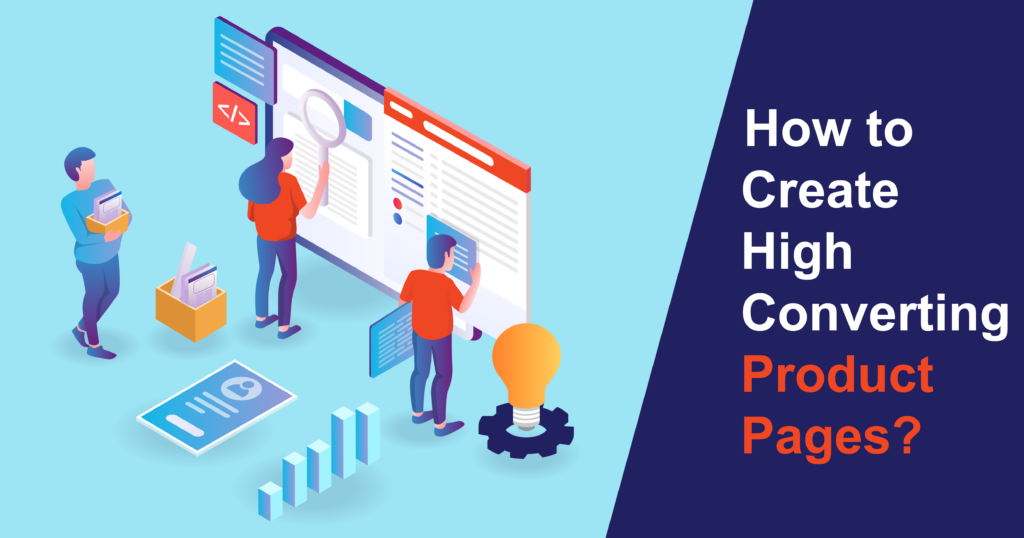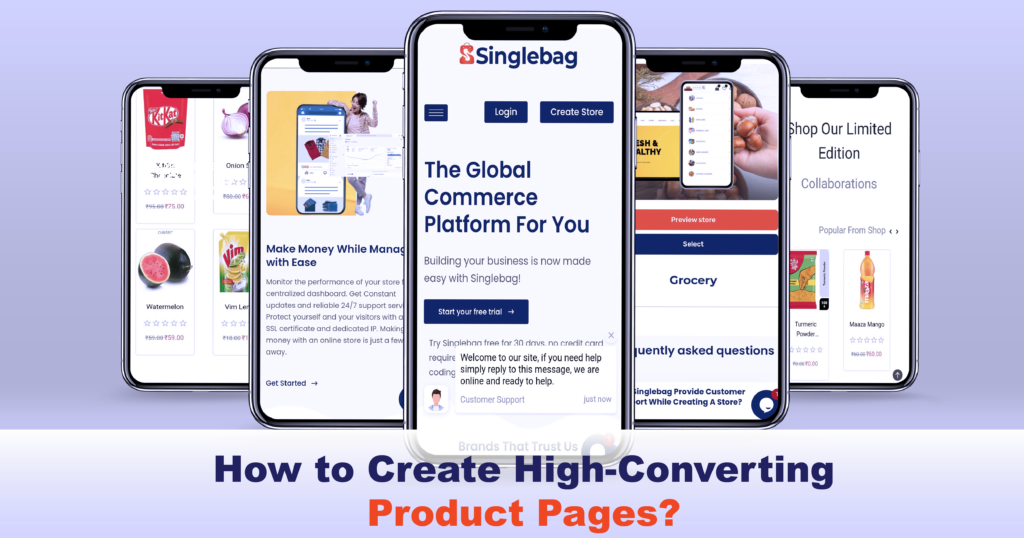
How to Create High-Converting Product Pages? All you need to know!

Did you ever notice? We often spend more time in the pages that are engaging and user-friendly to scroll. So, the online store effectiveness of your product pages. These virtual shop windows serve as the first point of contact between your products and potential customers. It makes it crucial to optimize them for conversions.
Here are the key strategies and elements that can turn your product pages into high-converting assets!
- Understanding Your Audience
- Compelling Product Descriptions
- High-Quality Visuals and Multimedia
- Simplified Navigation and User Experience
- Incorporate Trust-Building Elements
- Optimize for Mobile Responsiveness
- Implement Urgency and Scarcity Tactics
- Streamline the Checkout Process
- Regularly Analyse and Repeat
1. Understanding Your Audience
Before entering into the nitty-gritty of product page optimization, it’s important to have a deep understanding of your target audience. What are their preferences, pain points, and buying behaviours?
Conducting thorough market research and leveraging analytics can provide valuable insights. It helps you tailor your product pages to resonate with your specific audience.
2. Compelling Product Descriptions
The cornerstone of any high-converting product page is a compelling product description. Engage your audience with clear, concise, and persuasive language. Highlight the unique selling points (USP) of your product.
Address how it solves a problem or fulfils a need. Use storytelling techniques to create an emotional connection. It helps the potential customers envision how the product can enhance their lives.
Incorporate relevant keywords to boost your page’s search engine optimization (SEO) and ensure your product is discoverable by potential customers. Balancing creativity with informativeness is key. Your product description should not only entice but also inform.
3. High-Quality Visuals and Multimedia
Humans are inherently excited by attractive visuals. So, the importance of high-quality visuals on product pages cannot be overstated. Include multiple images showcasing the product from different angles, providing a clear view of its features.
If applicable, consider incorporating lifestyle images that depict the product in use, helping customers visualize its real-world application. Product videos can be a powerful tool for boosting conversions. A short, engaging video demonstrating the product’s benefits, features, and usage can significantly impact a potential customer’s decision-making process.
4. Simplified Navigation and User Experience
A cluttered and confusing website is a major deterrent for potential customers. Ensure that your product pages are easy to navigate, with a clear and intuitive layout. The user experience should be seamless, from the moment a visitor lands on your page to the checkout process.
Implement a clean design that guides visitors through essential information such as product details, pricing, and a prominent call-to-action (CTA) button. Minimize distractions and unnecessary elements that may divert attention away from the primary goal – converting a visitor into a customer.
5. Incorporate Trust-Building Elements
Building trust is very important in the world of e-commerce. Integrate trust signals into your product pages to alleviate any concerns potential customers may have. This can include customer reviews and testimonials, security badges, and transparent policies regarding shipping, returns, and customer support.
Highlighting positive customer experiences and showcasing real-world examples of your product in action can go a long way in establishing credibility. Consider incorporating guarantees or warranties to reinforce the quality and reliability of your products.
6. Optimize for Mobile Responsiveness
In the digital era where mobile devices dominate online traffic, ensuring that your product pages are optimized for mobile is non-negotiable. A seamless and responsive mobile experience is crucial for capturing a broader audience and maximizing conversions.
Test your product pages on various devices to guarantee a consistent and user-friendly experience. Streamlined navigation, legible text, and easy access to essential information are paramount for mobile users. Failing to cater to this growing demographic could result in missed opportunities and lost sales.
7. Implement Urgency and Scarcity Tactics
Creating a sense of urgency and scarcity can prompt potential customers to make quicker decisions. Techniques such as limited-time promotions, countdown timers, and low-stock notifications can create a FOMO (fear of missing out), driving visitors to convert before the opportunity expires.
However, it’s crucial to use these tactics judiciously. Authenticity is key. Misleading or false claims can damage your brand’s reputation and erode trust. Striking the right balance between urgency and honesty can create a compelling environment for conversions.
8. Streamline the Checkout Process
Even with the most captivating product pages, a complicated or lengthy checkout process can lead to abandoned carts. Streamline the checkout process, making it as convenient as possible.
Minimize the number of steps and offer guest checkout options to accommodate customers who prefer a swift and hassle-free experience. Implement a progress indicator so customers are aware of how far they are in the checkout process.
Additionally, provide multiple payment options and ensure that the entire process is secure, displaying trust symbols to instil confidence.
9. Regularly Analyse and Repeat
The digital landscape is dynamic, and consumer preferences can evolve rapidly. Regularly analyse the performance of your product pages using analytics tools. Pay attention to metrics such as conversion rates, bounce rates, and user behaviour to identify areas for improvement.
A/B testing can be a powerful tool for experimenting with different elements on your product pages, such as CTA buttons, colours, or product images. Based on data-driven insights, you can continually optimize your product pages to align with changing consumer expectations and market trends.
Singlebag:
Singlebag is a SaaS-based company that provides software for businesses that host their store online. It is not as simple as it sounds. Just by making your own online store, Singlebag helps to free you from the multiple commissions charged by the market platforms. It also helps you realize your own profits in a transparent manner.
Conclusion
Crafting effective product pages involves knowing your audience, creating engaging content, and optimizing continuously. Use compelling descriptions, quality visuals, easy navigation, and trust-building elements to make your pages conversion-ready. But it doesn’t stop at the sale!
Excellent post-purchase support and adapting based on feedback ensure long-term success. Stay customer-focused, agile, and let your top-notch product pages elevate your online business!






Responses